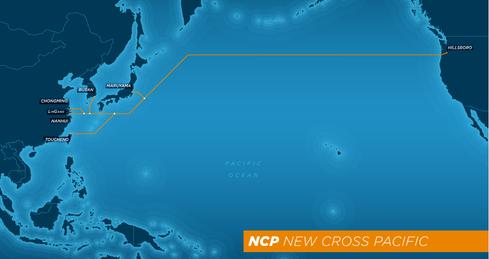Microsoft is now part of an international consortium of telecoms and cable manufacturers bringing 80TBps data speeds across the Pacific Ocean. The goal is to increase Microsoft's cloud capacity.


Microsoft at 40: 5 Successes, 5 Failures
Microsoft at 40: 5 Successes, 5 Failures (Click image for larger view and slideshow.)
Software giant Microsoft has been focusing lately on putting hardware in the hands of consumers and bringing businesses into the cloud, but now Redmond is plunging to the bottom of the sea.
This week, Microsoft detailed how for the past nine months it had been "significantly" investing in subsea and terrestrial dark fiber capacity by engaging in fiber partnerships that span multiple oceans and continents.
One of those deals, a partnership between Microsoft, Hibernia, and Aqua Comms, will see each company connect one high-speed data cable, one to connect Microsoft's data center infrastructure from North America to Ireland, and then on to the UK.
On the other side of the world, Microsoft will invest in its first physical landing station in the US, connecting North America to Asia.
Microsoft, which is part of a consortium made up of China Mobile, China Telecom, China Unicom, Chunghwa Telecom, and KT Corp., with TE SubCom as the cable supplier, hopes the project will aid the company in competing on cloud costs and provide faster data connections for customers.
It's no surprise that Microsoft would want to build out and control these types of undersea connections. With so much emphasis on cloud computing, Microsoft needs to deliver the bandwidth, as well as the capacity, to ensure data gets to its customers.
"When we look to the future with these investments, we believe our customers will see that Microsoft is pulling together all the components necessary to make its cloud services the most reliable, accessible and secure," David Crowley, managing director of network enablement for Microsoft, wrote on the company's blog.
"Competition in the cloud and infrastructure space continues to heat up," Crowley added. "But it's not a battle that will be won on just cloud or infrastructure alone, but instead on holistic innovation and providing value to customers from the sea to the sky."
The New Cross Pacific (NCP) Cable Network's target service date is in the fourth quarter of this year. The NCP is expected to serve as key infrastructure across the Pacific by providing the foundation for new bandwidth-intensive services.
[Read about Microsoft's vision for 2015.]
Using 100 Gigabit Ethernet technology, the NCP cable system will span about 8,500 miles, directly connecting China, Japan, Korea, and Taiwan to the US.
The NCP is expected to have a capacity of 80 terabytes per second (TBps) -- that's one trillion bits or bytes per second, across the Pacific Ocean.
The consortium was first announced in February 2013. Construction began on Monday, announced in a separate release that also acknowledges Microsoft's involvement for the first time.
The $300 million FASTER cable, in which Google has invested, is capable of 60 TBps trans-Pacific data movement and is expected to be ready for service in the second quarter of 2016.
The other five investors in FASTER include China Mobile International, China Telecom Global, Global Transit, KDDI, and SingTel.
According to digital marketing consultant Builtvisible, as of 2015 there have been nearly 300 underwater cables built in oceans around the world, totaling just less than 680,000 miles of cable.
About the Author(s)
You May Also Like







